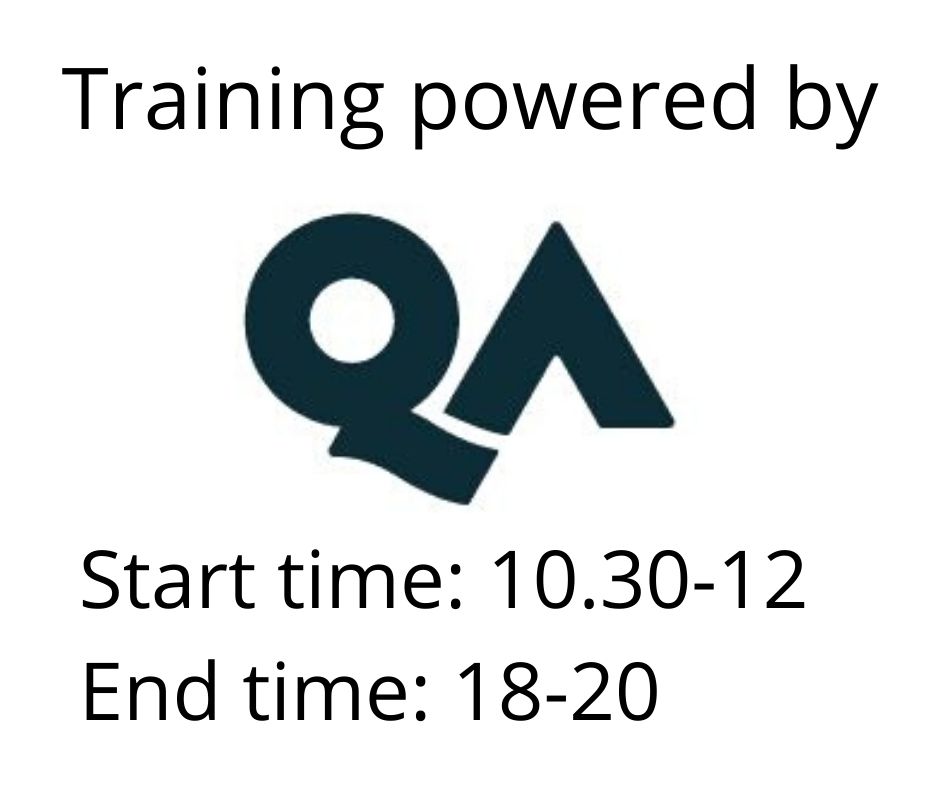Mastering Microsoft Dynamics 365 Customer Engagement (CE)
Osallistumismuoto
Remote
Kesto
5 päivää
Hinta
5666 €
Target Group
This 5-day course will empower learners to be able to administer Dynamics 365 through the Microsoft Power Platform and customise the Customer Engagement platform of Dynamics 365. After the course delegates, with some additional study, will be ready to take the Microsoft PL-200 exam Microsoft Power Platform Functional Consultant.
Prerequisites
Important - This course has MFA Requirements. Please read this link and download the MFA app, prior to attending.
Working Knowledge of Dynamics 365.
Instructors will demonstrate features throughout the event. Optional Lab exercises are available for learners to complete within a learner-created free trial tenancy. Microsoft may require a valid credit card to create 30 day free tenancies which must be cancelled within 30 days to avoid incurring charges. QA have no control over the Microsoft 365 trial tenancy signup or billing process.
Course Content
Module 1 – The Unified Interface (UI)
- Model-Driven Apps
- Lab A – Investigating the Unified Interface
Module 2 – Introduction to Dynamics 365 Customisation
- Default & Dataverse Default Solutions
- Create a New Solutions & Publishers
- Solutions
- Exporting and Importing Solutions
- Lab A – Configuring the Power Platform Environment
- Lab B – Create a Publisher and Solution
Module 3 – Security Model: User Management
- Adding Users to Microsoft Dynamics 365
- User Licensing in Dynamics 365
- Lab A – Adding Users
Module 4 – Security Model: Business Units
- Business Unit Hierarchy
- How to Create & Modify Business Units
- Lab A – Creating Business Unit Structure
Module 5 – Security Model: Security Roles
- Relationship between Security Roles and Business Units
- Special Roles
- Privileges and Access Levels
- Miscellaneous Privileges
- Create and Copy Roles
- Lab A – Configuring Security Roles
Module 6 – Teams in Dynamics 365
- Team Types
- Creating a Team
- Migrating Users/Teams between Business Units
- How to reassign Users to different Business Units
- Lab A – Managing and Creating Teams
Modue 7 – Configure Email Services
- Server-Side Synchronisation
- Configuring Server-Side Synchronisation
- Email Server Profiles
- Configuring Mailbox Records
- Microsoft Dynamics 365 App for Outlook
- Folder Tracking
- Lab A – Configuring Email Integration
- Lab B – Configuring Outlook Integration
Module 8 – Integration with Other Microsoft 365 Offerings
- Integration with SharePoint
- Security: Permissions
- Lab A – SharePoint Integration
- Integrate with OneDrive
- Permission: Security
- OneNote Integration
- Working with Microsoft Teams
- Lab B – Integrating with Microsoft Teams
Module 9 – Model Driven Apps
- App Designer
- Lab 5 – Create a Model-Driven App
Module 10 – Customisation of Tables
- Creating and modifying tables
- Lab A – Creating Custom Tables
Module 11 – Creating and Customising Columns
- Columns and their Display Formats
- Deleting Columns from a Table
- Lab A – Creating Additional Columns for the Public Event & Event Booking Tables
- Calculated Columns
- Lab B – Creating a Calculated Column
- Lab C – Creating a Rollup Column (if time permits)
Module 12 – Establishing Relationships
- Relationship Types
- Lab A – Create and Modify a 1: N Relationship
- Lab B – Create a N:N Relationship
- Lab C – Creating Hierarchical Relationships
- Column Mappings in Dynamics 365
- Connections and Connection Roles
- Create a Connection
- Lab D – Connecting Records (if time permits)
Module 13 – Form Customisation
- Quick Create Forms
- Lab A – Create a Quick Create Form
- Main Form Customisations
- Lab B – Form Customisation
- Lab C – Adding Quick View Form Data to a Child Table Form
- Lab D – Securing an Additional Form
Module 14 – Introduction to Business Rules
- Creating Business Rules
- Activating & Using Business Rules
- Lab A – Create a Business Rule
Module 15 – Creating, Maintaining and Customising Views
- Creating Views
- Modifying System Views
- Lab A – Modify the Quick Find View & Create a New Public View
Module 16 – Chart Customisation
- Chart Structure
- Lab A – Create a Custom Chart
Module 17 – Dashboards
- Creating Standard Dashboards
- Creating Interactive Dashboards
- Lab A – Create a System Standard Dashboard
- Lab B – Creating an Interactive Experience Dashboard
Module 18 – Additional Security Features
- Introducing Column Level Security
- Lab A – Configure Column Security
- Enabling Auditing
- Lab B – Enable Auditing & View Audit Records
Module 19 – Creating Processes
- Creating and Activating Microsoft Cloud Flows
- Lab A – Create Flow
- Creating Business Process Flow
- Securing Business Process Flow
- Lab B – Create a Business Process Flow
Module 20 – Working with Solutions
- Solution Management
- Solution Patching
- Lab A – Solution Patching
- When to use a Managed or Unmanaged Solution
- Lab B – Import a Managed Solution
Module 21 – Do it Yourself!
Hinta 5666 € +alv
Pidätämme oikeudet mahdollisiin muutoksiin ohjelmassa, kouluttajissa ja toteutusmuodossa.
Katso usein kysytyt kysymykset täältä.
